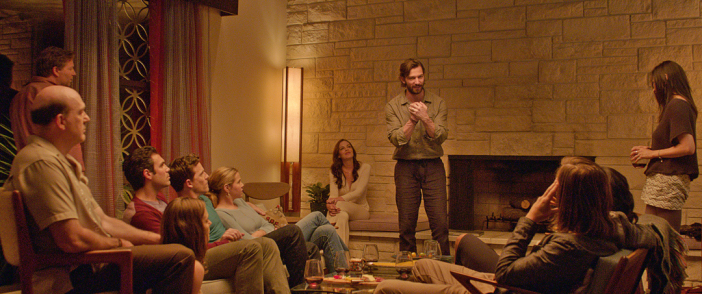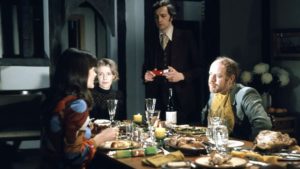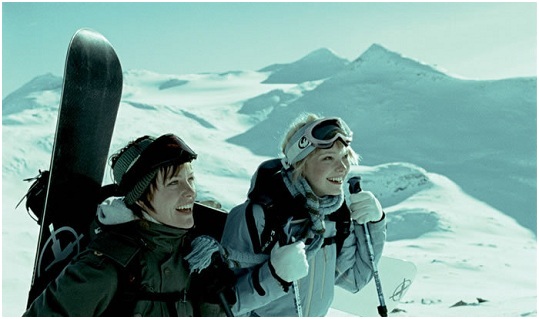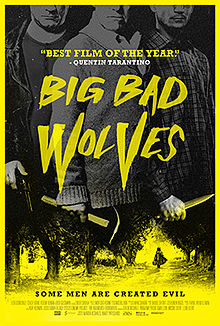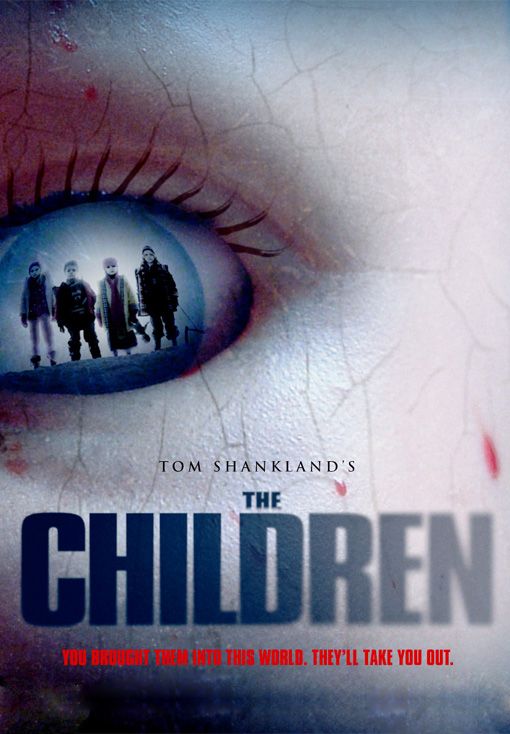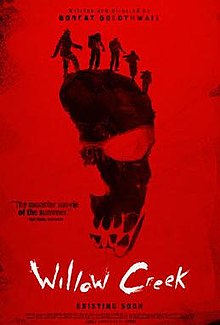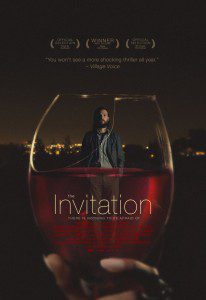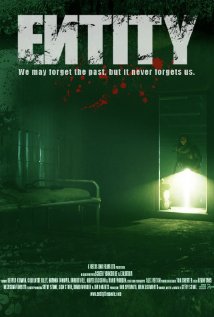Christmas is the perfect time for the tale of unease, whether it’s on the page or on the screen, and there’s no shortage of films and television plays that hit all the right notes at this time of year. But there can come a point where you’ve watched the same classic films so many times that you’re crying out for a change.
So, with that in mind, here are a few screen frighteners you might be a little less familiar with. With one exception, they all date from the past twenty years, and are all easy enough to get hold of. Some involve a supernatural menace, others a human one. So if you’re looking for a Christmas movie marathon, why not try a few of these?
1) The Exorcism (1972)
The oldest and shortest—at 50 minutes—entry on this list is an episode of Dead Of Night, a series of supernatural dramas broadcast by the BBC. Only three episodes of the original seven survive (the others are Return Flight and A Woman Sobbing), and The Exorcism is the best. It also has the advantage of being set over Christmas.
A middle class city couple (Anna Cropper and Edward Petherbridge) have bought an old country cottage, and are hosting a small Christmas gathering, when things begin to go wrong. First the power fails, and then the phone goes dead. Par for the course in 1970s Britain perhaps, but then the wine they’re drinking turns to blood, it becomes clear that this is far more than just another power cut.
Slowly it’s revealed that the evening’s strange events are all linked to the cottage’s grim history, to an old act of injustice and a curse that echoes down the centuries.
The Exorcism is perfect for anyone who loves the old BBC Ghost Stories For Christmas but has seen them all so often they can recite the dialogue in their sleep. Such as me. It probably doesn’t hurt that the cast includes Ghost Story alumni such as Clive Swift (The Stalls Of Barchester and A Warning To The Curious) and Edward Petherbridge (The Ash Tree.) The Exorcism lives up to the promise its pedigree suggests, and is a slow-building and effective creeper of a story.
2) Ils (Them) (2006)
This Franco-Romanian film sticks with the theme of middle-class folk moving to a place in the country—in this case young French couple Clementine (Olivia Bonamy) and Lucas (Michaël Cohen) who buy a beautiful but isolated house in the Romanian countryside only to find themselves targeted by a gang of small, hooded assailants. With the phones cut off and the house miles from anywhere, they’re soon under siege.
Them is a lean, tight home-invasion film, not much more than an hour long, and without an ounce of surplus weight. Directors David Moreau and Xavier Palud eschew gore in favour of suspense and atmosphere and some very well-placed jump scares. And a football rattle will never sound quite the same again.
Slasher movies have a tendency to leave me cold (which is another reason Black Christmas and Silent Night, Deadly Night aren’t on this list), but this Norwegian offering from director Roar Uthaug is an exception. Five twenty-somethings—two couples and a singleton friend—go skiiing in Norway’s Jotunheim mountains, venturing off the normal tourist trails in search of something new. When one breaks his leg in an accident, and with night coming on and their phones unable to pick up a signal, they need to find cover quickly.
The group take shelter in a long-abandoned ski lodge, but are unaware that there’s another inhabitant—a massively-built, fur-clad, pick-axe-wielding killer who doesn’t like trespassers and sets about taking them out one by one. That’s pretty much the plot, so why does this film do it for me when so many other slashers don’t?
One reason is the characterisation. The small group at the centre of Cold Prey aren’t the thinly-characterised shreddies or whiny, selfish arseholes so many films of this type offer up: they’re well-rounded, flawed but ultimately likeable people that we actually care about. The situation and the setting of the snowbound, windswept mountain range and the dilapidated ski-lodge, caught in its 1970s timewarp, are interesting enough that you could actually take the killer out of the story and still have the makings of an absorbing film. The performances are all excellent, especially by leading lady Ingrid Bolsø Berdal, who won the Amanda—Norway’s equivalent of the Oscar—for the role.
Another reason is that even though the killer is (at least apparently) human, Cold Prey has the feel of a supernatural horror film, perhaps because there’s something almost archetypal, even mythic, about this tale of travellers who unwittingly trespass on a monster’s hidden mountain home and incur its wrath. You could almost believe they’ve stumbled on the lair of a troll.
The sequel, Cold Prey: Resurrection, with Berdal reprising her role, is almost as good as the original film, and together they make up a fine double bill. Uthaug has gone on to direct mediaeval chase thriller Escape (again starring Berdal) and disaster movie The Wave, which is gripping—even frightening—in a way that few disaster movies ever manage to be. Berdal, a superb actress—she’s great, too, in the non-horror film De Gales Hus (House Of Fools)—will probably be most familiar to Anglophone viewers as Natalie in Chernobyl Diaries and as the gunslinger Armistice in HBO’s Westworld.
4) Big Bad Wolves (2013)
Horror of a different kind is the focus of this Israeli movie directed by Aharon Keshales and Navot Papushado. Schoolteacher Dror (Rotem Keinan) is the prime suspect in the gruesome and sadistic murder of several little girls. Unable to prove his guilt, police detective Micki (Lior Ashkenazi) hires a couple of thugs to snatch Dror and they try to beat a confession out of him, but Dror maintains his innocence. Worse, the beating is filmed by a teenager and posted online. Micki is suspended, but not before the decapitated corpse of another victim—the daughter of ex-soldier Gideon (Tzahi Grad)—is found.
Micki sets out to take matters into his own hands, aiming to force a confession from Dror at gunpoint, but both are kidnapped by Gideon, who wants to find his daughter’s missing head and has set up a soundproofed underground torture chamber in which to do so.
None of this might sound particularly amusing, but Big Bad Wolves is comedy of the ultra-blackest kind. It’s one of those films where you find yourself laughing hysterically at things that shouldn’t be funny at all, but without ever cheapening its subject matter, and it comes with a particularly cruel twist at the end. I first saw it at Grimmfest in Manchester, and in a year that offered great movies, it was far and away the best of the lot. An absolute cracker of a film.
5) Grave Encounters (2011)
You’d be forgiven from the trailer for the Vicious Brothers’ Grave Encounters for thinking that it was a weak rip-off of Session 9 and Blair Witch, but you’d still be wrong. The plot: the team behind an American Most Haunted-style documentary series, complete with a phony medium (Mackenzie Gray), investigate the long-abandoned Collingwood Mental Hospital that was the scene of unethical medical experiments and patient abuse. Their aim is to produce something suitably sensational out of the usual creaking pipes, sinister shadows and fake conversations with the dead, but very quickly things start going wrong …
… which you probably guessed already, of course. But as always, it’s the treatment of the material that makes all the difference. Jump scares and horror of the obvious, more screamy kind is at a minimum in Grave Encounters: what makes it so disturbing is its slow, horrible warping of reality. When the film crew are spooked by occurrences to the point at which any sensible human being would want to leave, that’s exactly what they decide to do: they head straight for the hospital’s main exit doors. The only problem is that the main doors now open out into yet another corridor inside the hospital. Similarly, the stairs to the roof end suddenly in a blank wall. Clocks stop working, making it impossible to keep track of time. And the night – quite literally – refuses to end. Long before any ghouls or monsters actually show their faces, Grave Encounters has knocked the props out from under its characters, and us, to leave both helpless in the void. By the end, the film has escalated from creepiness and unease to outright terrifying nightmare, so much so that the night we viewed it at Castle Bestwick, we had to watch several episodes of Grace and Frankie before we felt safe to go to bed…
One of only two feature films made by Tom Shankland before his move into television work (the other being the Se7en-like thriller WΔZ), this one’s actually set over Christmas, but it’s anything but the season of goodwill.
Elaine (Eve Birthistle) and Jonah (Stephen Campbell Moore), with their two young children and Elaine’s rebellious teen daughter Casey (Hannah Tointon), travel to the countryside to spend Christmas with Elaine’s sister Chloe (Rachel Shelley) and her family. Unbeknown to them, however, a mysterious virus has infected the children of both families, causing them to turn psychotic and homicidal. Soon the adults are fighting for their lives against their own offspring (or siblings and cousins, in Casey’s case.)
The Children is genuinely disturbing, not least because of the nature and identity of the killers, tapping into primal fears and taboos. Not for the faint-hearted, but if the kids in your family are driving you up the wall this Christmas, it might be just the catharsis you need.
Filmmaker Jim (Bryce Johnson) is obsessed with the Bigfoot legend and, with his long-suffering girlfriend Kelly (Alexie Gilmore) in tow, sets off for Willow Creek in California, the so-called ‘Bigfoot Capitol of the world.’ Filming as they go, they explore the town and then the woods beyond, hoping to capture proof of the giant cryptid on film.
Director Bobcat Goldthwait’s films are notable for their dark, skewed sense of mirth (before Willow Creek he directed the superb black comedy God Bless America) and his first foray into horror begins with a tone of quirky humour as Jim and Kelly explore the real-life town of Willow Creek. Goldthwait needs to invent very little: many of the town’s actual oddball residents appear on screen. But the mood shifts slowly and surely into something darker and altogether more menacing as the couple move deeper into the woods. Bigfoot himself is never seen, but it’s what you hear in the dark that evokes an abiding sense of dread. One of the most terrifying scenes, shot in a single static long take inside a tent, will have all but the most steel-nerved or unimaginative viewers on the edge of their seats.
8) Banshee Chapter (2013)
Blair Erickson’s directorial debut weaves the works of H.P. Lovecraft together with one of the darkest episodes in 20th century American history. During the 1950s and 1960s, the CIA operated a program known as MKULTRA, designed to produce workable methods of mind control. A dubious enough aim in itself, but the CIA also used US citizens as unwitting guinea pigs in their experiments. (All this is, sadly, documented historical fact rather than the product of a horror writer’s fevered imagination.)
The methods tested by MKULTRA included psychedelic drugs, including the particularly rare DMT-19. James Hirsch (True Blood’s Michael McMillian) obtains a sample of DMT-19 and is videoed taking it, shortly after which he mysteriously disappears.
Anne Roland (Katia Winter), a reporter friend of James’, sets out to find him. The trail leads to the Hunter S. Thompson-esque counter-culture author Thomas Blackburn (the always-reliable Ted Levine), who has his own supply of the drug.
As Anne learns, DMT-19 turns the human mind into a kind of cosmic radio antenna, able to pick up signals from outside normal human perception, to see different dimensions and the creatures that inhabit them. But if you can see them, they can also see you. Banshee Chapter’s blend of Cold War conspiracism and supernatural terror make for a very unsettling ride.
Karyn Kusama’s fourth feature is partly a meditation on grief and loss, partly a dark comedy of unease and partly a menacing thriller, The Invitation revolves around a couple, Will (Logan Marshall-Hall) and Eden (Tammy Blanchard) whose marriage breaks up following the loss of their child. Eden has now remarried to David (Michiel Huisman), who she met through a grief support group, and has invited Will and his new girlfriend Kira (Emayatzy Corineadi) to a dinner party, along with a group of their former mutual friends.
Eden and David – together with their new friends Sadie (Lindsay Burdge) and Pruitt (John Carroll Lynch) discuss their support group, ‘The Invitation’, which promotes healing through spiritual philosophy. But how exactly does that work, and is this just a simple dinner party after all?
The Invitation is one of those films where you slowly get a sense of something being off-kilter somewhere, a feeling that grows until you finally realise just what the hell is going on. After watching it, it’s established Kusama as a director whose work I’ll be eagerly seeking out in the future.
Not to be confused with the 1982 Barbara Hershey flick, Steve Stone’s film, like Banshee Chapter, combines Cold War paranoia and supernatural menace, this time on the other side of the Iron Curtain. Local author-cum-tour guide Yuri (Branko Tomovic) guides a documentary crew led by journalist Kate (Charlotte Riley) and psychic Ruth (Dervla Kirwan) through a Siberian forest to a clearing where thirty-six bodies were found, their identities and cause of death unknown. The bodies have long ago been removed, but as Ruth soon learns, the spirits of the dead still linger.
Beyond the clearing lies Sadovich, a derelict Cold War military installation. Further investigation uncovers evidence of appalling institutional cruelty and abuse, and the purpose behind the base becomes clear: to transform psychically gifted people like Ruth into a weapons system for assassination and sabotage by enhancing and controlling their abilities through torture and psychosurgery. When it failed, Sadovich was shut down, the inmates who’d survived the experiments shot and their bodies buried in the clearing near the facility.
Most of the dead are only tormented and lost, But another spirit haunts the building—a murdered psychic called Mischka, who’s full of rage, craving vengeance on the world of the living, and far more powerful in death than he ever was in life. Meanwhile, Yuri, their guide, turns out to have an agenda of his own.
Stone’s movie offers both dread and jump scares; Mark Ashworth’s excellent sound design plays a big part in the film’s effectiveness, so I recommend watching this one with the volume turned well up.
Happy Christmas viewing, and a Horrific New Year!
SIMON BESTWICK
Simon Bestwick’s latest book is the mini-collection Singing Back The Dark, from available now from Black Shuck Books.

